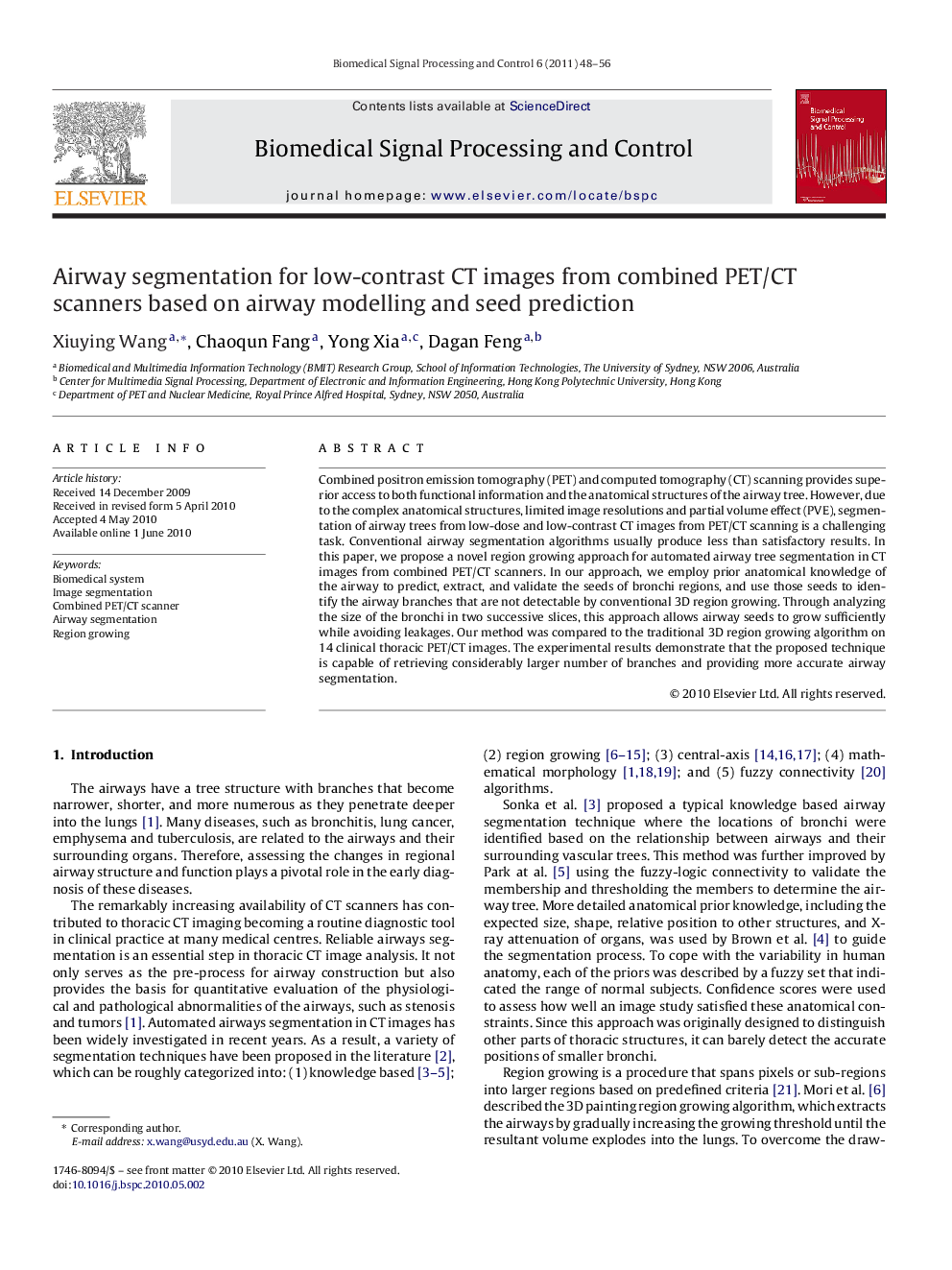| Article ID | Journal | Published Year | Pages | File Type |
|---|---|---|---|---|
| 557629 | Biomedical Signal Processing and Control | 2011 | 9 Pages |
Combined positron emission tomography (PET) and computed tomography (CT) scanning provides superior access to both functional information and the anatomical structures of the airway tree. However, due to the complex anatomical structures, limited image resolutions and partial volume effect (PVE), segmentation of airway trees from low-dose and low-contrast CT images from PET/CT scanning is a challenging task. Conventional airway segmentation algorithms usually produce less than satisfactory results. In this paper, we propose a novel region growing approach for automated airway tree segmentation in CT images from combined PET/CT scanners. In our approach, we employ prior anatomical knowledge of the airway to predict, extract, and validate the seeds of bronchi regions, and use those seeds to identify the airway branches that are not detectable by conventional 3D region growing. Through analyzing the size of the bronchi in two successive slices, this approach allows airway seeds to grow sufficiently while avoiding leakages. Our method was compared to the traditional 3D region growing algorithm on 14 clinical thoracic PET/CT images. The experimental results demonstrate that the proposed technique is capable of retrieving considerably larger number of branches and providing more accurate airway segmentation.
